


Drying clothes can be a time-consuming task, especially during the colder months when it’s difficult for them to dry naturally. That’s where a heated airer comes in handy. But how long does it actually take for a heated airer to dry clothes?
The drying time of a heated airer depends on various factors, such as the fabric of the clothes, the thickness of the material, and the amount of moisture in the garments. However, on average, a heated airer can dry clothes in significantly less time compared to air-drying.
One of the advantages of using a heated airer is that it provides a consistent source of heat, which helps in speeding up the drying process.
The exact time it takes for an airer to dry clothes can vary, but generally, it can take anywhere between two to four hours. This is much faster than traditional air-drying, which can take up to a full day or more, especially when the weather is humid or cold.
Additionally, heated airers are designed to evenly distribute heat, ensuring that your clothes dry uniformly without any damp spots. This eliminates the need for constantly moving or rearranging your clothes for better drying.
Discover the Benefits of Using a Heated Airer
A heated airer, also known as a heated clothing rack or a heated clothes horse, is a convenient and efficient way to dry your clothes indoors. It offers a wide range of benefits that make it a valuable addition to any household:
1. Quick Drying Time:
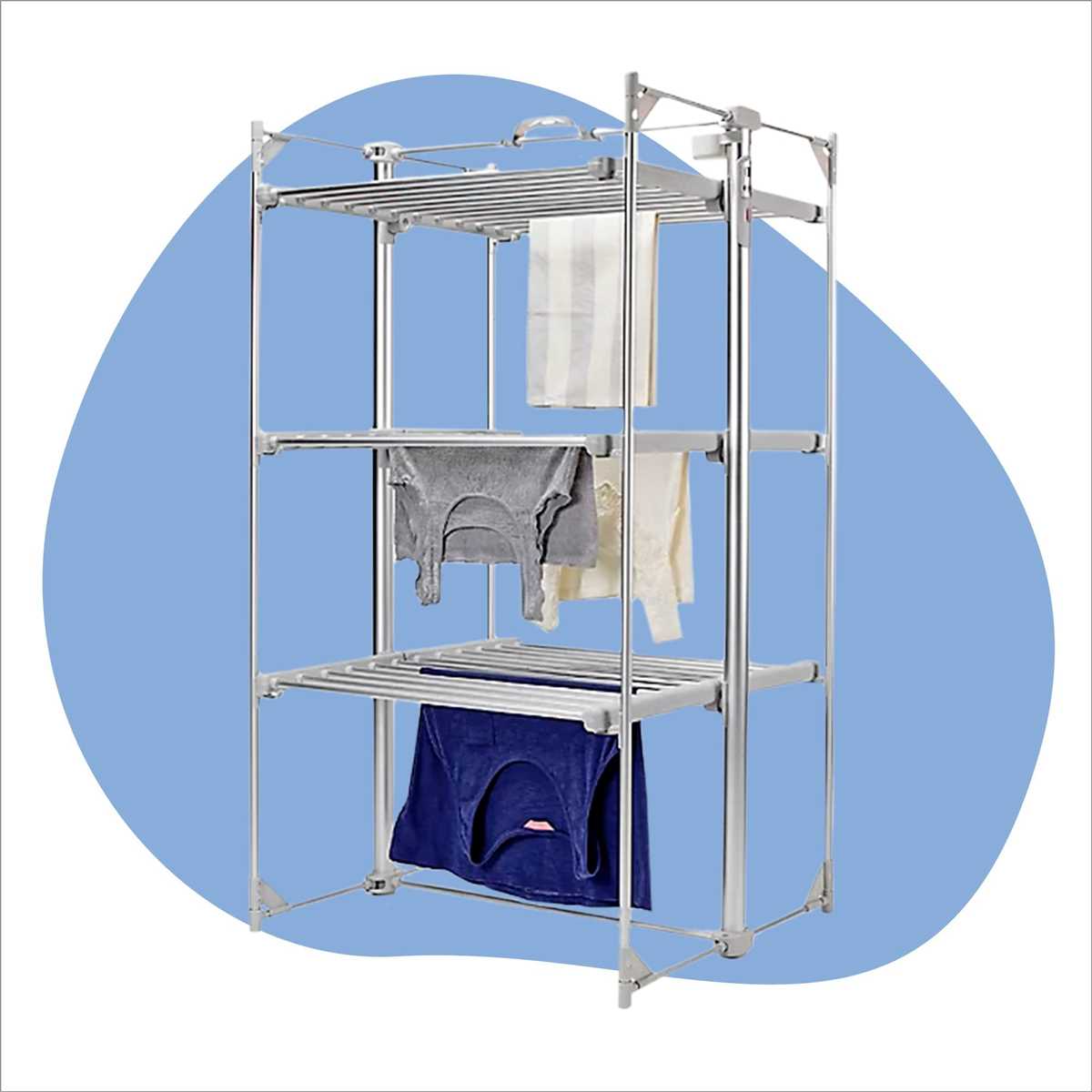
One of the main advantages of using a heated airer is its ability to dry clothes quickly. With the heat provided by the airer, your clothes will dry much faster compared to traditional drying methods such as hanging them on a clothesline or using a regular clothes horse.
2. Versatility:
A heated airer can be used to dry a variety of garments, including clothes, towels, bed sheets, and even delicate items like lingerie. This versatility makes it a versatile drying solution for different types of laundry.
3. Space-Saving:
Unlike bulky drying racks or clotheslines that require a lot of space, a heated airer is compact and can be easily folded and stored when not in use. It is an excellent choice for those living in small apartments or houses with limited drying space.
4. Gentler on Clothes:
Using a heated airer is gentler on your clothes compared to using a tumble dryer. The heated air gently circulates around your garments, helping to prevent shrinkage, color fading, and damage to delicate fabrics.
5. Energy Efficiency:
Heated airers are designed to be energy-efficient, consuming much less electricity compared to traditional tumble dryers. This makes them a more environmentally-friendly and cost-effective alternative for drying your clothes.
6. Convenience:
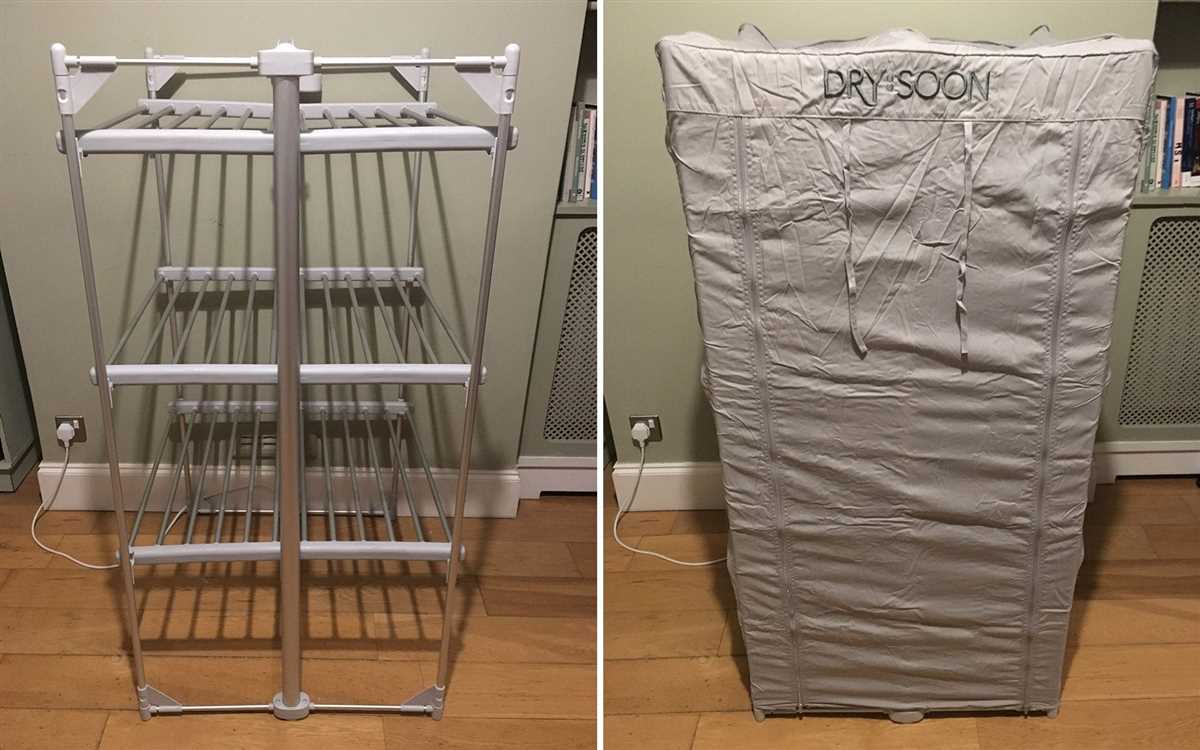
With a heated airer, you don’t have to worry about the weather conditions or waiting for a sunny day to dry your clothes. It provides a convenient indoor drying solution that can be used throughout the year, regardless of the weather outside.
7. Reduces Condensation:
By using a heated airer, you can reduce the amount of condensation in your home. Unlike tumble dryers, which release large amounts of moisture into the air, heated airers dry clothes more gently and help to maintain a controlled humidity level.
8. No Ironing Needed:
When clothes are dried on a heated airer, they often come out much less wrinkled compared to tumble drying. This means less time spent on ironing, making the drying process even more convenient.
Overall, a heated airer is a practical and efficient solution for drying your laundry. Its quick drying time, versatility, space-saving design, gentleness on clothes, energy efficiency, convenience, reduction of condensation, and reduced need for ironing make it a beneficial addition to any home.
Understanding Drying Times
Drying clothes can be a time-consuming task, but using a heated airer can help speed up the process. However, it’s important to understand that drying times can vary depending on several factors.
1. Fabric type
The type of fabric plays a significant role in drying times. Lightweight synthetic fabrics, such as nylon or polyester, tend to dry faster than heavier fabrics like denim or wool. This is because lightweight fabrics absorb less water and have better air circulation, allowing them to dry more quickly.
2. Amount of moisture
If your clothes are excessively wet, they will take longer to dry. It’s always a good idea to remove excess water by ringing out your clothes before placing them on the heated airer. This will help reduce drying time significantly.
3. Room temperature and humidity
The temperature and humidity in the room also affect drying times. Higher room temperatures and lower humidity levels can speed up the drying process. If possible, try to place the heated airer in a well-ventilated room with a slightly elevated temperature to facilitate faster drying.
4. Heated airer settings

Most heated airers offer adjustable temperature settings. The higher the temperature setting, the faster your clothes will dry. However, it’s important to follow the manufacturer’s guidelines to prevent any damage to your clothes. Choosing the appropriate temperature setting will help optimize drying times without compromising the fabric’s integrity.
5. Item placement
How you place your clothes on the heated airer can also affect drying times. Make sure to evenly distribute the items and avoid overlapping them excessively. This will ensure better airflow and faster drying times.
6. Load size
The number of clothes you put on the heated airer at once can affect drying times. Overloading the airer can impede airflow, resulting in longer drying times. It’s best to follow the manufacturer’s guidelines regarding load size for optimal drying efficiency.
7. Regular maintenance
To ensure efficient drying times, it’s essential to keep your heated airer clean and in good working condition. Regularly check for lint buildup or obstructions in the air vents, as this can impede airflow and increase drying times. Also, make sure to follow any maintenance instructions provided by the manufacturer.
By considering these factors and making the necessary adjustments, you can optimize drying times and efficiently dry your clothes using a heated airer.
Factors That Affect Drying Time
When using a heated airer to dry clothes, several factors can affect the overall drying time. Understanding these factors can help you achieve efficient and effective drying results.
1. Moisture Content
The initial moisture content of the clothes plays a significant role in determining the drying time. Wetter clothes will naturally take longer to dry compared to slightly damp or damp items.
2. Fabric Type
The type of fabric also contributes to the drying time. Light and thin fabrics such as cotton or polyester typically dry faster than heavier fabrics like wool or denim. Additionally, fabrics with a looser weave or texture tend to dry quicker than those with a tighter weave.
3. Load Size
The amount of clothing being dried at once affects the drying time. Overloading the airer can restrict airflow and reduce the efficiency of the drying process. It’s recommended to leave enough space between garments to ensure proper air circulation.
4. Temperature Setting
The temperature setting on the heated airer can also impact the drying time. Higher temperatures will expedite the drying process, while lower temperatures may prolong it. However, it’s important to follow the manufacturer’s guidelines to prevent damage to the clothes.
5. Humidity and Ventilation
The humidity and ventilation in the drying area can influence how long it takes for clothes to dry. High humidity levels can slow down the drying process, while good ventilation can help remove moisture from the air, speeding up drying.
6. Room Temperature
The ambient room temperature can affect the efficiency of the heated airer. Warmer rooms promote faster evaporation of moisture from the clothes, leading to shorter drying times. If the room is colder, the airer may take longer to reach the desired level of dryness.
7. Pre-spin and Post-spin
If your washing machine has a spin cycle, using it before drying can help remove excess water from the clothes, reducing the overall drying time. Additionally, leaving clothes on the airer for a short period after drying can allow any residual moisture to evaporate, ensuring they are fully dry.
Note: These factors can vary depending on the specific heated airer model and the type of clothes being dried. It’s always best to refer to the manufacturer’s instructions for optimal drying times and settings.
Optimizing Drying Times with a Heated Airer
When using a heated airer to dry your clothes, you may be wondering how long it will take for your garments to dry completely. There are several factors that can affect the drying time, but with a few tips and tricks, you can optimize the drying process and achieve efficient results.
Choose the Right Temperature
One of the key factors in drying time is the temperature at which you set your heated airer. Most heated airers offer adjustable temperatures, allowing you to select a setting that suits the fabric type and thickness of your clothes. Setting the temperature too high can cause shrinkage or damage to your clothes, while setting it too low may prolong the drying time. Ideally, you should select a temperature that ensures effective drying without compromising the quality of your garments.
Arrange Clothes Properly
How you arrange your clothes on the heated airer can also impact the drying time. It is important to distribute the clothes evenly and avoid overcrowding or bunching them up. This allows for proper airflow and ensures that each garment is exposed to the heated air evenly. If clothes are too tightly packed, the air may not circulate effectively, leading to longer drying times.
Consider Fabric Types
The type of fabric also plays a role in drying times. Thicker and heavier fabrics, such as denim or towels, will naturally take longer to dry compared to lighter fabrics like silk or cotton. When using a heated airer, it is helpful to separate the fabrics according to their thickness and drying times. This way, you can remove the lighter fabrics once they are dry, allowing the remaining clothes to dry more efficiently.
Avoid Adding Wet Clothes During the Drying Process
If you have additional wet clothes that you need to dry, it is best to wait until the current batch is almost dry or completely dry before adding them to the heated airer. Adding wet clothes during the drying process can increase the overall drying time, as the airer needs to work harder to dry the new batch. By waiting and adding new clothes in stages, you can optimize the drying time and ensure that all your clothes dry efficiently.
Regular Maintenance
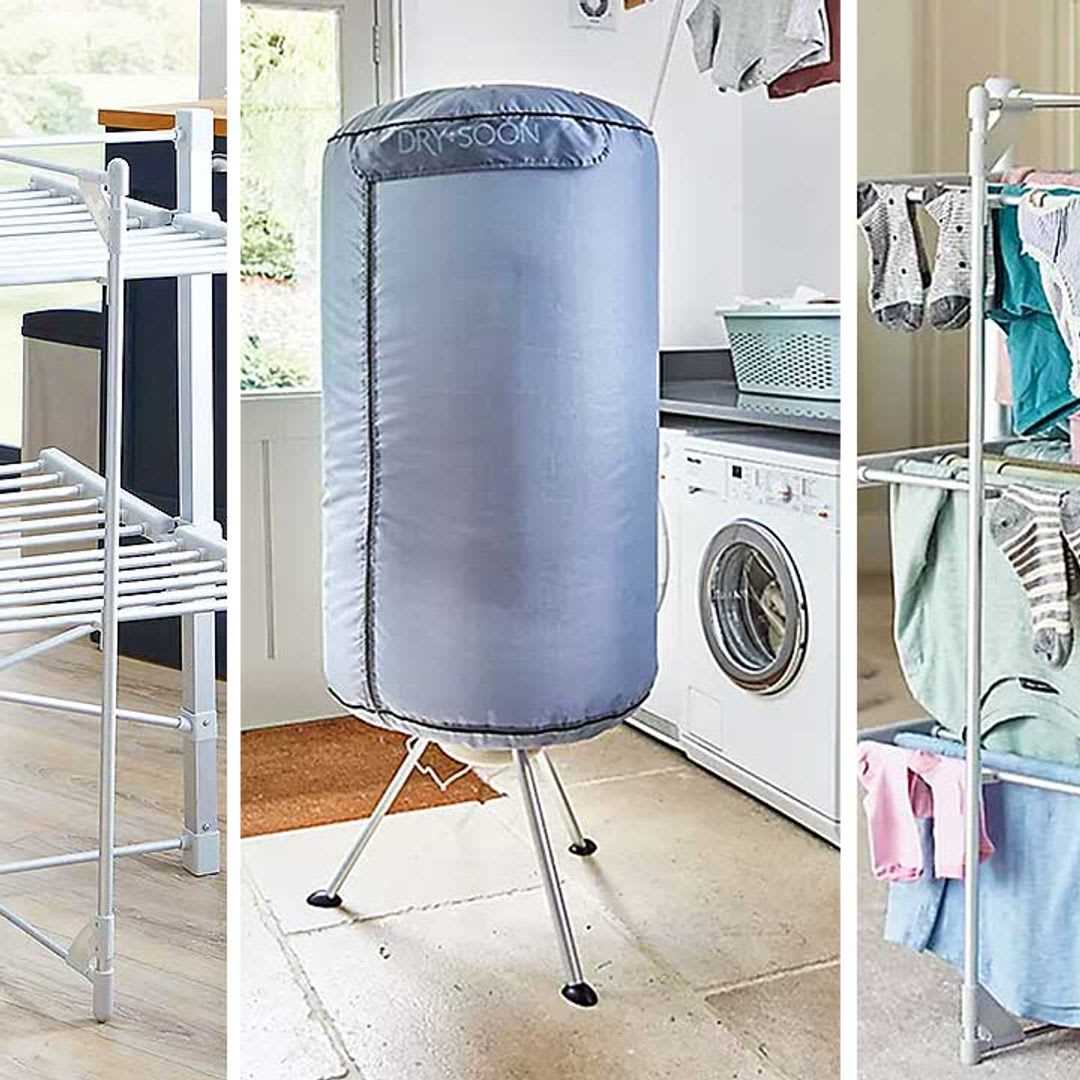
Maintaining your heated airer properly can also help optimize drying times. Make sure to clean the airer regularly to remove any lint or debris that may obstruct the airflow. This allows for better air circulation and faster drying. Additionally, check for any worn-out or damaged components that may affect the efficiency of the heated airer, and replace them if necessary.
By following these tips and tricks, you can optimize the drying time with your heated airer and ensure that your clothes are dried efficiently without incurring any damage. Remember to always follow the manufacturer’s instructions and guidelines for the specific heated airer model you are using to achieve the best results.
Efficient Drying Techniques
When using a heated airer, there are several techniques you can employ to maximize its efficiency and reduce drying times:
1. Sort your laundry
One of the key factors in efficient drying is to sort your laundry before placing it on the heated airer. Separate your clothes based on fabric type, thickness, and level of dampness. This will help to ensure that each load dries at a similar rate, reducing the overall drying time.
2. Shake out the clothes
Before placing your clothes on the airer, give them a good shake to remove any wrinkles or clumped-up fabric. This will help to increase the airflow between the items and promote quicker drying.
3. Arrange clothes strategically
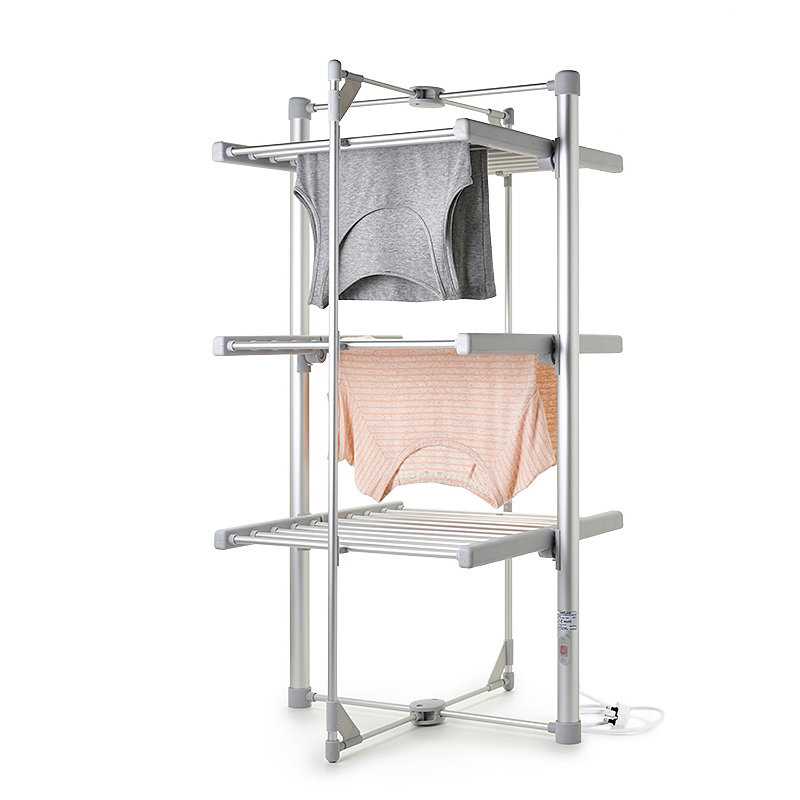
When placing your clothes on the heated airer, make sure to arrange them strategically. Place thicker items like towels or jeans on the lower sections of the airer, as they will take longer to dry. Lighter garments, such as t-shirts or underwear, can be placed on the upper racks for faster drying.
4. Use hangers for delicate items
If you have delicate items, such as silk blouses or dresses, consider using hangers to hang them directly on the heated airer. This will allow better airflow and prevent any stretching or damage to the fabric.
5. Avoid overloading
While it may be tempting to load up the airer with as many clothes as possible, it’s important to avoid overloading it. Overpacking the airer can restrict airflow and lead to longer drying times. Leave enough space between items for air circulation.
6. Use the timer function
Most heated airers come with a timer function. Utilize this feature to set a specific drying time for your laundry. By setting a timer, you can avoid over-drying or under-drying your clothes and save energy in the process.
7. Regularly clean the airer
To maintain optimal efficiency, it’s important to regularly clean your heated airer. Dust and lint can accumulate on the heating elements, reducing their effectiveness. Wipe down the airer with a damp cloth or use a vacuum cleaner to remove any debris.
By implementing these efficient drying techniques, you can significantly reduce the drying times of your laundry and enjoy freshly dried clothes in no time.
How to Arrange Clothes for Fast Drying
Drying clothes on a heated airer can significantly speed up the drying process compared to traditional methods. However, to maximize efficiency and ensure fast drying times, it’s important to arrange your clothes in a way that allows maximum airflow and heat circulation. Here are some tips for arranging your clothes for fast drying on a heated airer:
1. Sort your clothes by material
Separating your clothes by material is essential for fast drying. Fabrics like cotton, linen, and synthetics dry faster than heavier materials like denim and wool. By sorting your clothes, you can ensure that the lighter fabrics dry quickly while the heavier ones take longer.
2. Shake out your clothes
Before placing your clothes on the airer, give them a good shake to remove any wrinkles and loosen the fibers. This will help improve airflow and ensure faster drying.
3. Hang clothes with space in between
Allowing space between each garment on the airer will enable better air circulation, resulting in faster drying. Avoid overcrowding the airer as this can block airflow and extend drying times.
4. Hang heavier items at the bottom
When arranging your clothes, hang heavier items like jeans or sweaters at the bottom of the airer. This will prevent them from weighing down lighter garments and obstructing their access to direct heat.
5. Turn clothes inside out
Turning your clothes inside out can help speed up the drying process by exposing the moisture-ridden side to direct heat. This allows quicker evaporation and drying of the fabric.
6. Use pegs or hangers for delicate items
Delicate fabrics like lingerie or silk should be hung using pegs or hangers to avoid stretching or distortion. Placing them flat on the airer can take longer to dry and may risk damage.
7. Use a towel for extra absorption
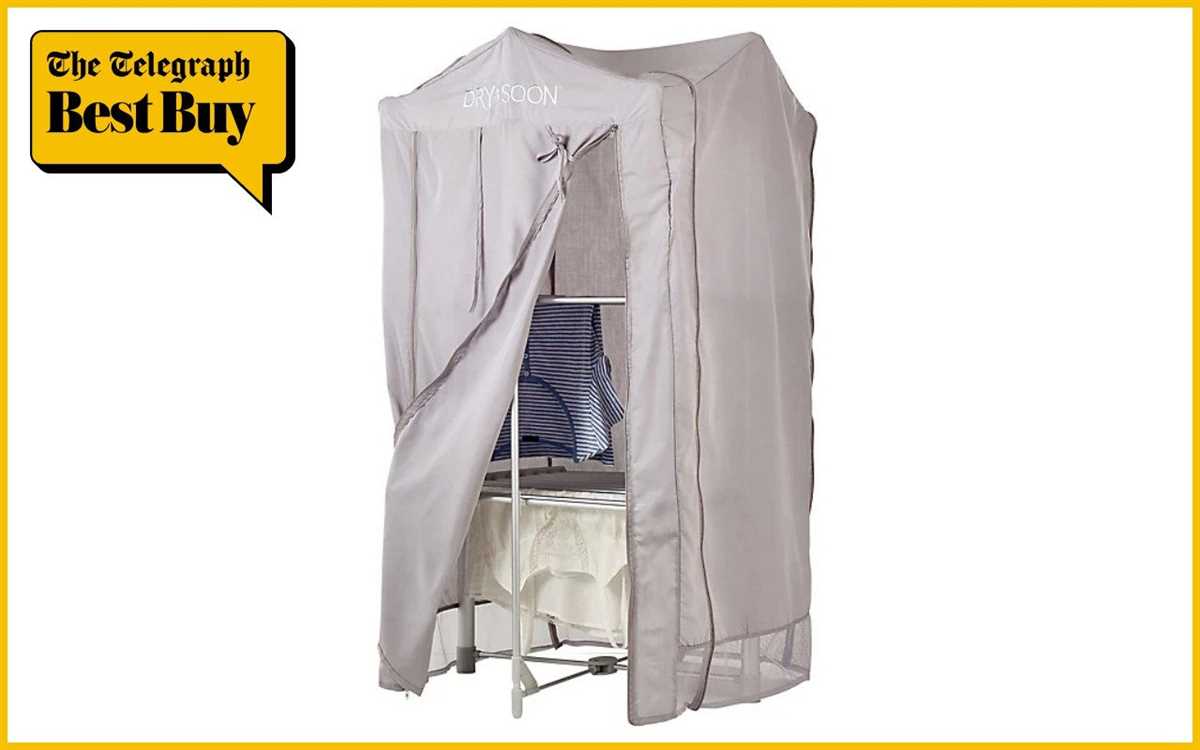
If you have particularly wet items, you can place a towel underneath them on the airer. The towel will absorb excess moisture and promote faster drying.
8. Check periodically and rearrange
Throughout the drying process, periodically check your clothes and rearrange them as needed. This will ensure that all items receive equal heat exposure and ensure a more efficient drying process.
By following these tips and arranging your clothes properly on a heated airer, you can achieve faster drying times and enjoy dry, fresh clothes in no time!
Tips for Speeding up the Drying Process
When using a heated airer to dry your clothes, there are a few tips you can follow to speed up the drying process:
1. Sort your clothes
- Separate your clothes based on fabric type and thickness.
- Drying similar fabrics together will help ensure even drying times.
2. Use a high heat setting
- Set your heated airer to the highest heat setting.
- This will help the warm air circulate faster and dry your clothes more quickly.
3. Arrange clothes properly
- Spread your clothes out evenly on the airer.
- Avoid overcrowding to allow for better air circulation.
- Tossing larger items, like towels or jeans, on first will help create a base for smaller items.
4. Use thinner fabrics
- If you have clothes made from different fabric types, prioritize thinner fabrics.
- Thinner fabrics tend to dry faster than heavier materials.
5. Rotate clothes

- If you notice that certain items are drying faster than others, rotate them.
- This will help ensure all your clothes dry evenly.
6. Open windows or doors
- If weather permits, open windows or doors to increase air circulation.
- This will help remove moisture from the air, aiding in the drying process.
7. Utilize space effectively
- If you have multiple levels on your heated airer, make use of all available space.
- Maximizing the amount of clothes you can dry at once will help speed up the drying time.
8. Avoid overloading
- While it can be tempting to load up your airer with as many clothes as possible, avoid overloading.
- Overloading can hinder air circulation and result in longer drying times.
9. Check for moisture
- Periodically check your clothes for moisture during the drying process.
- If clothes feel damp, redistribute them on the airer for more efficient drying.
10. Allow for sufficient time
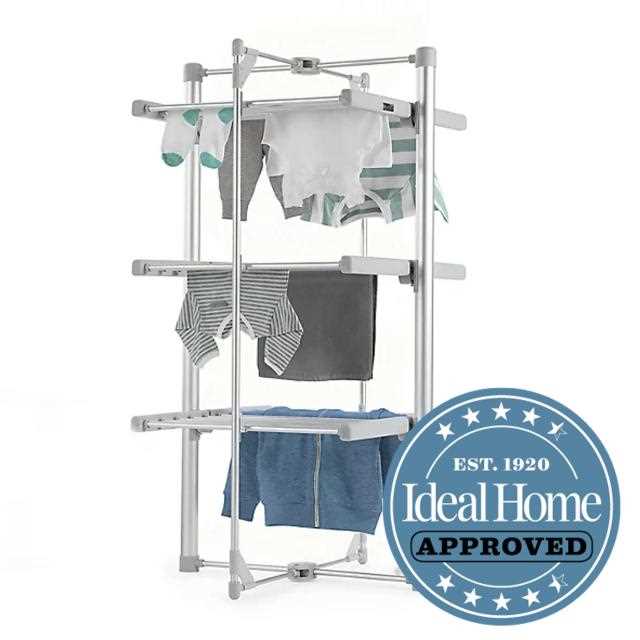
- Remember that drying times can vary depending on factors such as fabric type and thickness.
- Allow for sufficient time to ensure your clothes are fully dry before removing them from the airer.
By following these tips, you can make the most of your heated airer and speed up the drying process for your clothes.
FAQ
How long does it take for clothes to dry on a heated airer?
The drying time on a heated airer can vary depending on several factors such as the type of fabric, the thickness of the clothing, and the temperature setting on the airer. However, on average, clothes can dry within 2 to 4 hours on a heated airer.
Does the size of the heated airer affect the drying time?
Yes, the size of the heated airer can affect the drying time. A larger airer can accommodate more clothes, allowing for better air circulation and faster drying. However, it’s important not to overload the airer as this can hinder the drying process.
Can I dry different types of fabric at the same time on a heated airer?
Yes, you can dry different types of fabric at the same time on a heated airer. However, it’s important to keep in mind that different fabrics have different drying times. Thicker fabrics such as towels or jeans may take longer to dry compared to lighter fabrics like shirts or underwear.
What temperature setting should I use on a heated airer?
The temperature setting on a heated airer will depend on the fabric you are drying. Most heated airers have adjustable temperature settings ranging from low to high. It’s recommended to start with a lower temperature setting for delicate fabrics and increase it gradually for thicker fabrics that require more heat to dry.
Can I leave the clothes unattended while drying on a heated airer?
It’s generally safe to leave the clothes unattended while drying on a heated airer. However, it’s always advised to follow the manufacturer’s instructions and safety guidelines. It’s also important to ensure that the airer is placed in a well-ventilated area and away from any flammable materials.












